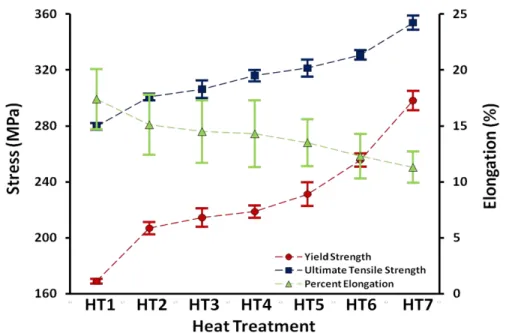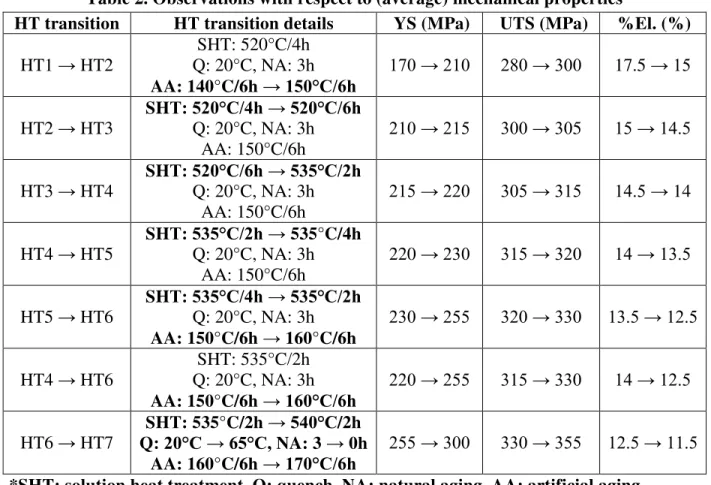Publisher’s version / Version de l'éditeur:
International Light Metals Technology (LMT) Conference, 5th, 2011-07-19
READ THESE TERMS AND CONDITIONS CAREFULLY BEFORE USING THIS WEBSITE.
https://nrc-publications.canada.ca/eng/copyright
Vous avez des questions? Nous pouvons vous aider. Pour communiquer directement avec un auteur, consultez la première page de la revue dans laquelle son article a été publié afin de trouver ses coordonnées. Si vous n’arrivez pas à les repérer, communiquez avec nous à PublicationsArchive-ArchivesPublications@nrc-cnrc.gc.ca.
Questions? Contact the NRC Publications Archive team at
PublicationsArchive-ArchivesPublications@nrc-cnrc.gc.ca. If you wish to email the authors directly, please see the first page of the publication for their contact information.
NRC Publications Archive
Archives des publications du CNRC
This publication could be one of several versions: author’s original, accepted manuscript or the publisher’s version. / La version de cette publication peut être l’une des suivantes : la version prépublication de l’auteur, la version acceptée du manuscrit ou la version de l’éditeur.
For the publisher’s version, please access the DOI link below./ Pour consulter la version de l’éditeur, utilisez le lien DOI ci-dessous.
https://doi.org/10.4028/www.scientific.net/MSF.690.169
Access and use of this website and the material on it are subject to the Terms and Conditions set forth at Effect of Heat Treatment on the Mechanical Properties of a Rheocast 357 Alloy using the SEED Method
Samuel, Ehab; Zheng, Chang-Qing
https://publications-cnrc.canada.ca/fra/droits
L’accès à ce site Web et l’utilisation de son contenu sont assujettis aux conditions présentées dans le site
LISEZ CES CONDITIONS ATTENTIVEMENT AVANT D’UTILISER CE SITE WEB.
NRC Publications Record / Notice d'Archives des publications de CNRC: https://nrc-publications.canada.ca/eng/view/object/?id=76d3a7d9-967b-4545-b6d4-01e0ae3c6273 https://publications-cnrc.canada.ca/fra/voir/objet/?id=76d3a7d9-967b-4545-b6d4-01e0ae3c6273
Effect of Heat Treatment on the Mechanical Properties of a Rheocast
357 Alloy using the SEED Method
Ehab Samuel
1and Chang-Qing Zheng
21, 2
National Research Council of Canada, Aluminum Technology Centre (NRC-ATC), 501 Boulevard de l’Universite, Chicoutimi, Canada
a
Ehab.Samuel@imi.cnrc-nrc.gc.ca, b Chang-Qing.Zheng@imi.cnrc-nrc.gc.ca
Keywords: aluminum casting, semi-solid, semi-solid casting, rheocasting, SEED process
ABSTRACT
The ability of Al-Si alloys to be cast into complex shapes, coupled with a favourable strength-to-weight ratio, has given them an advantage in the automotive industry. To further improve casting quality, many have turned to semi-solids, where alloys exhibit flow properties that stem from the material's dual liquid-solid nature and globular microstructure. The SEED (Swirled Enthalpy Equilibration Device) process is a novel rheocasting technology yielding a semi-solid slurry from the mechanical agitation (swirling) and cooling of molten aluminum. In the current work, a SEED processed 357-T6 alloy displayed typical yield and ultimate tensile strength values of 210-250 and 300-320 MPa, respectively. Furthermore, the average elongation observed was 12-17%.
INTRODUCTION
Aluminum-silicon alloys have been put into practice in the automotive industry, by virtue of being low in density, while maintaining adequate strength [1]. Among these, numerous studies regarding the 357 alloy have been carried out in terms of mechanical properties and microstructure. Given this foundation, the authors chose to utilize this material as a reference point in an ongoing effort to study and improve the SEED process. The SEED process, as developed by Rio Tinto Alcan in collaboration with the Aluminum Technology Centre of NRC Canada (NRC-ATC), is a rheocasting method designed to permit semi-solid casting on site, which is the primary advantage to thixocasting. Coupled with the added savings in transportation and handling of thixocast billets, rheocasting processes such as SEED can increase part production. Moreover, the semi-solid billet is immediately fed into a mold/press. In this study, a 357 SEED-cast semi-solid alloy was subjected to seven T6 heat treatments where either the solution treatment or aging stage was varied. In this way, the authors observed the effects of strengthening, primarily attributed to the Mg2Si phase, with favourable levels of
ductility.
EXPERIMENTAL PROCEDURE
The 357 alloy (7±0.1wt%Si, ≤0.10t%Fe, 0.59±0.03wt%Mg, 0.09±0.01wt%Ti,
0.0025±0.0005wt%Sr and Al balance) was cast into wedge shape plates at NRC-ATC using SEED and a high pressure die-cast press (Figure 1). These plates were then T6 heat-treated (Table 1), and, from these, round bar ASTM E8M tensile samples were machined along the plate widths. Testing was carried out using a 50-kN capacity MTS servohydraulic tensile tester, with 10-15 tensile samples tested per heat treatment. Solution heat treating at 535°-540°C and artificially aging at 160°-170°C greatly encourages the formation of the Mg2Si hardening phase
Figure 1. SEED process with a high pressure die-cast (HPDC) press [2]. Table 1. Heat treatments (HT) used in this work
HT HT schedule HT1 SHT: 520°C/4h, Q: 20°C, NA: 3h, AA: 140°C/6h HT2 SHT: 520°C/4h, Q: 20°C, NA: 3h, AA: 150°C/6h HT3 SHT: 520°C/6h, Q: 20°C, NA: 3h, AA: 150°C/6h HT4 SHT: 535°C/2h, Q: 20°C, NA: 3h, AA: 150°C/6h HT5 SHT: 535°C/4h, Q: 20°C, NA: 3h, AA: 150°C/6h HT6 SHT: 535°C/2h, Q: 20°C, NA: 3h, AA: 160°C/6h HT7 SHT: 540°C/2h, Q: 65°C, AA: 170°C/6h
*SHT: solution heat treatment, Q: quench, NA: natural aging, AA: artificial aging
Lower aging temperatures/times are sometimes used to improve ductility [6-9]. An increase in elongation was furthermore observed with a reduction in quench temperature, along with a natural aging step in between quenching and artificial aging [10-12].
RESULTS AND DISCUSSION
Figure 2 illustrates the results - average yield strength (YS), ultimate tensile strength (UTS) and percent elongation (%El.), with error - as a function of the given heat treatment.
It is seen from Figure 2 that the YS and UTS of the alloy increase as the solution heat treatment temperature and, more importantly, aging temperature increase. Given that the Mg2Si
hardening precipitates are formed during aging, yet sufficient dissolution of Mg and Si is required prior to this, then it is important to have a proper balance between the solution heat treatment, quench and aging steps in the T6 temper. The increase in YS is sharp from HT1 to HT2, gradual from HT2 to HT5 and sharp again from HT5 to HT7. The increase in UTS is more gradual throughout. Simultaneously, the alloy decreases in ductility, yet maintains a favourable level of %El., from HT1 to HT7. The decrease in elongation is sharp from HT1 to HT2, and gradual from HT2 to HT7. At HT7, the alloy exhibits a maximum average YS of 300 MPa, maximum average UTS of 355 MPa, with an associated average %El. of 11.5%. As the highest value of UTS (and lowest value of elongtion) occurs at HT7, it can be assumed that an aging temperature of 170°C falls either at, or just before, the point of peak aging. Therefore, all aging temperatures from HT1 to HT6 fall in the underaging region.
It is important to note that sharp increases in strength (e.g. HT1 to HT2 and HT5 to HT7) occur when there is a change in the aging temperature (the aging time was fixed at 6 hours), whereas for the gradual increase in strength from HT2 to HT5, there are only changes in solution treatment, rather than aging. Therefore a 10° change in aging temperature brings about a greater increase in YS and UTS than either a change in solution temperature or time. A typical tensile sample having a fully globular microstructure is shown in Figure 3, and a full summary of observations made from Figure 2 is given in Table 2.
Table 2. Observations with respect to (average) mechanical properties
HT transition HT transition details YS (MPa) UTS (MPa) %El. (%)
HT1 → HT2 SHT: 520°C/4h Q: 20°C, NA: 3h AA: 140°C/6h → 150°C/6h 170 → 210 280 → 300 17.5 → 15 HT2 → HT3 SHT: 520°C/4h → 520°C/6h Q: 20°C, NA: 3h AA: 150°C/6h 210 → 215 300 → 305 15 → 14.5 HT3 → HT4 SHT: 520°C/6h → 535°C/2h Q: 20°C, NA: 3h AA: 150°C/6h 215 → 220 305 → 315 14.5 → 14 HT4 → HT5 SHT: 535°C/2h → 535°C/4h Q: 20°C, NA: 3h AA: 150°C/6h 220 → 230 315 → 320 14 → 13.5 HT5 → HT6 SHT: 535°C/4h → 535°C/2h Q: 20°C, NA: 3h AA: 150°C/6h → 160°C/6h 230 → 255 320 → 330 13.5 → 12.5 HT4 → HT6 SHT: 535°C/2h Q: 20°C, NA: 3h AA: 150°C/6h → 160°C/6h 220 → 255 315 → 330 14 → 12.5 HT6 → HT7 SHT: 535°C/2h → 540°C/2h Q: 20°C → 65°C, NA: 3 → 0h AA: 160°C/6h → 170°C/6h 255 → 300 330 → 355 12.5 → 11.5
Figure 3. Tensile sample (HT7, %El. = 14.5%) with a fully globular microstructure. CONCLUSIONS
In this work, a SEED-processed 357 alloy was shown to exhibit a fully globular microstructure, with a maximum average YS and UTS of 300 and 355 MPa, respectively. Although elongation decreased as strength increased, typical %El. values fell in the range of ~12-17%. Moreover, the average UTS increased by 25% from 280 MPa (HT1) to 350 MPa (HT7), and the average YS is nearly doubled from 170 MPa (HT1) to 300 MPa (HT7).
ACKNOWLEDGEMENTS
The authors gratefully acknowledge support from the National Research Council Canada (NRC), Rio Tinto Alcan and STAS, as well as Dany Drolet, Marie-Eve Larouche, Stephane Lamontagne, Helene Gregoire, Genevieve Simard and Alain Simard of the Aluminum Technology Centre for their input, support and expertise.
REFERENCES
[1] C.H.Cacares, I.L. Svensson and J.A.Taylor: Int. J. Cast Met. Res., 15(2003), 531-543. [2] A. Lemieux, J. Langlais, D. Bouchard and X.G. Chen: Trans. Nonferrous Met. Soc. China,
20(2010), 1555-1560.
[3] Q.G. Wang, D. Apelian and D.A. Lados: J. Light Met., 1(2001), 85-97. [4] Y.X. Gan and R.A. Overfelt: J. Mater. Sci., 41(2006), 7537-7544.
[5] M. Brochu, Y. Verreman, F. Ajersch and D. Bouchard: Int. J. Fatigue (2010). [6] D. Apelian, S.Shivkumar and G. Sigworth: AFS Trans., 137(1989), 727-742.
[7] S.C. Bergsma, M.C. Tolle, M.E. Kassner, X. Li and E. Evangelista: Mater. Sci. Eng. A, 237(1997), 24-34.
[8] M.A. Bayoumi, M.I. Negm and A.M. El-Gohry: Mater. Design, 30(2009), 4469-4477. [9] S. Shivkumar, S. Ricci Jr., B. Steenhoff, D. Apelian and G. Sigworth: AFS Trans.,
138(1989), 791-810.
[10] M. Tsukuda, S. Koike and M. Harada: J. Japan Inst. Light Met., 28(1978), 8-14. [11] P.R. Austen and H.M. Williamson: J. Australian Inst. Met., 20(1979), 39-44.


